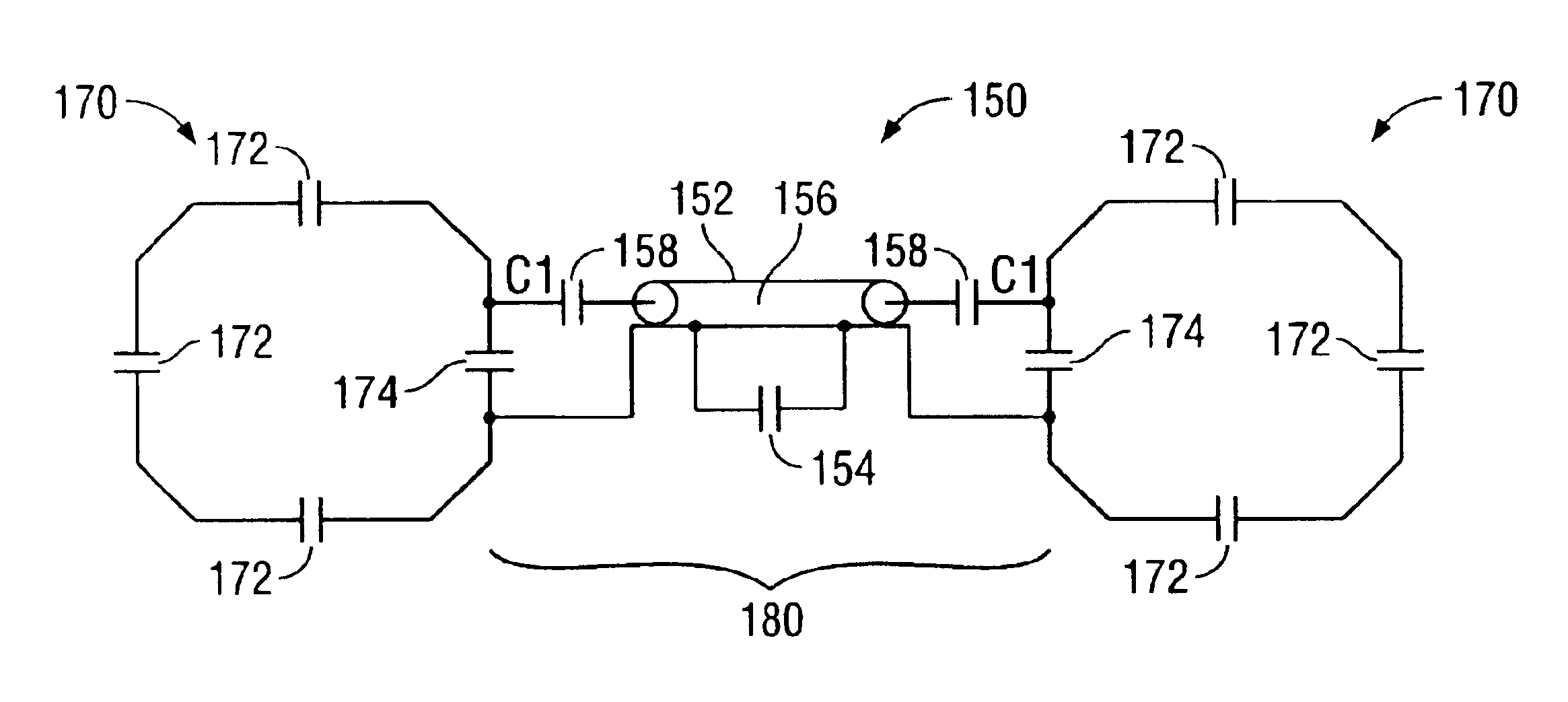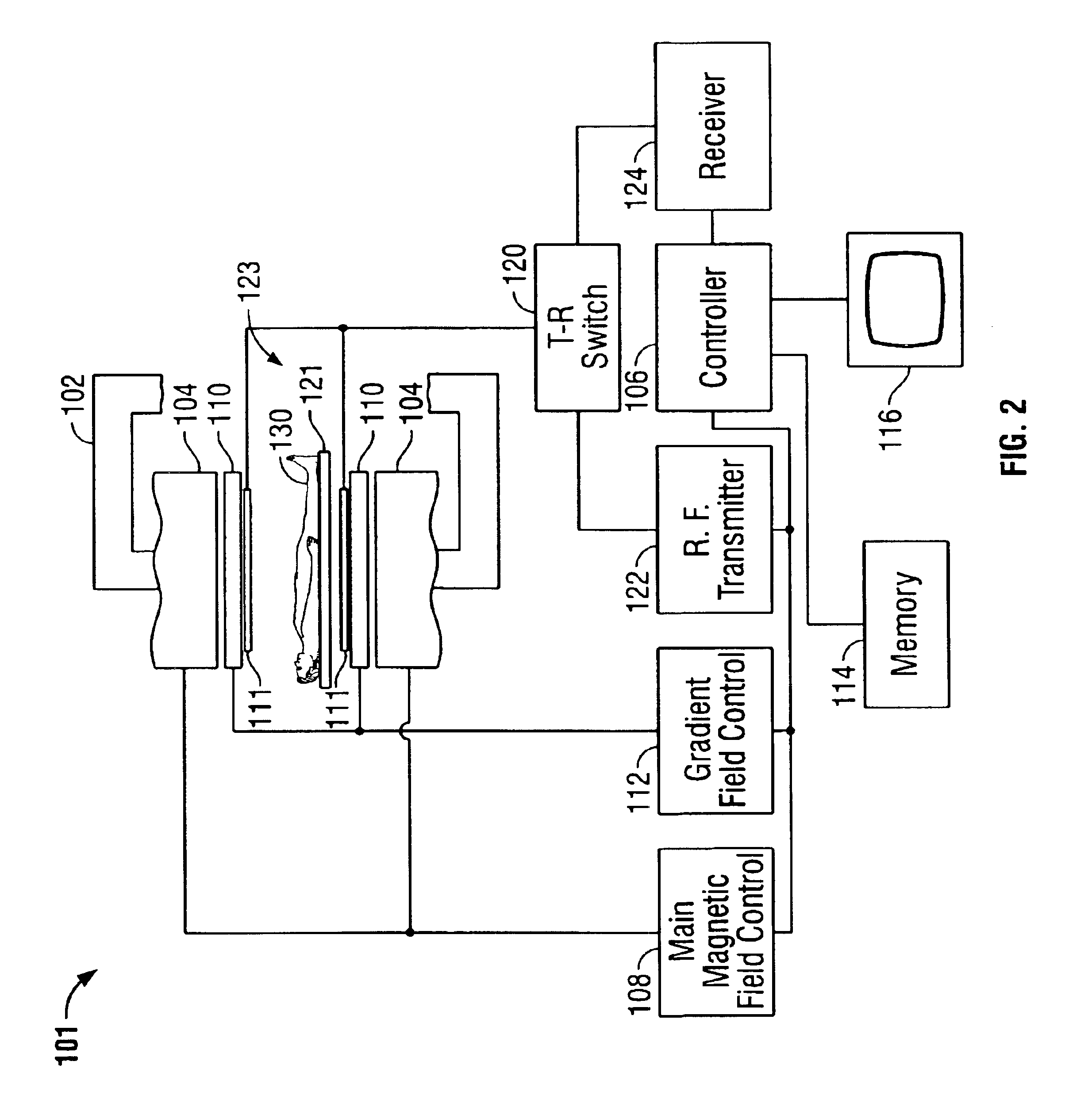Surface coil decoupling means for MRI systems
a surface coil and coil technology, applied in the field of magnetic resonance imaging (mri) systems, can solve the problems of limiting the ability to move the coil, reducing the signal-to-noise ratio (snr or s/n), and reducing the capacitance between the coils, so as to achieve the limited operation and control of these mri systems
- Summary
- Abstract
- Description
- Claims
- Application Information
AI Technical Summary
Benefits of technology
Problems solved by technology
Method used
Image
Examples
Embodiment Construction
[0017]Various exemplary embodiments of the present invention provide a system and method for decoupling coils in, for example, a magnetic resonance imaging (MRI) system. For example, the various exemplary embodiments provide means for decoupling coils (e.g., a plurality of tuned surface coils) that may be adjacent each other or separated by a gap.
[0018]FIG. 1 is a block diagram of an exemplary embodiment of an MRI system in which systems and methods for decoupling in accordance with various embodiments of the present invention may be implemented. As shown therein, an MRI system 100 includes an electromagnet 102, pole pieces 104, a controller 106, a main magnetic field control 108, a gradient coil sub-system 110, a gradient field control 112, a memory 114, a display device 116, a transmit-receive (T-R) switch 120, a radio frequency (RF) transmitter 122, a receiver 124 and an array of detectors 126 (e.g., a cylindrical array of equally-spaced detectors). It should be noted that althou...
PUM
 Login to View More
Login to View More Abstract
Description
Claims
Application Information
 Login to View More
Login to View More - R&D
- Intellectual Property
- Life Sciences
- Materials
- Tech Scout
- Unparalleled Data Quality
- Higher Quality Content
- 60% Fewer Hallucinations
Browse by: Latest US Patents, China's latest patents, Technical Efficacy Thesaurus, Application Domain, Technology Topic, Popular Technical Reports.
© 2025 PatSnap. All rights reserved.Legal|Privacy policy|Modern Slavery Act Transparency Statement|Sitemap|About US| Contact US: help@patsnap.com



